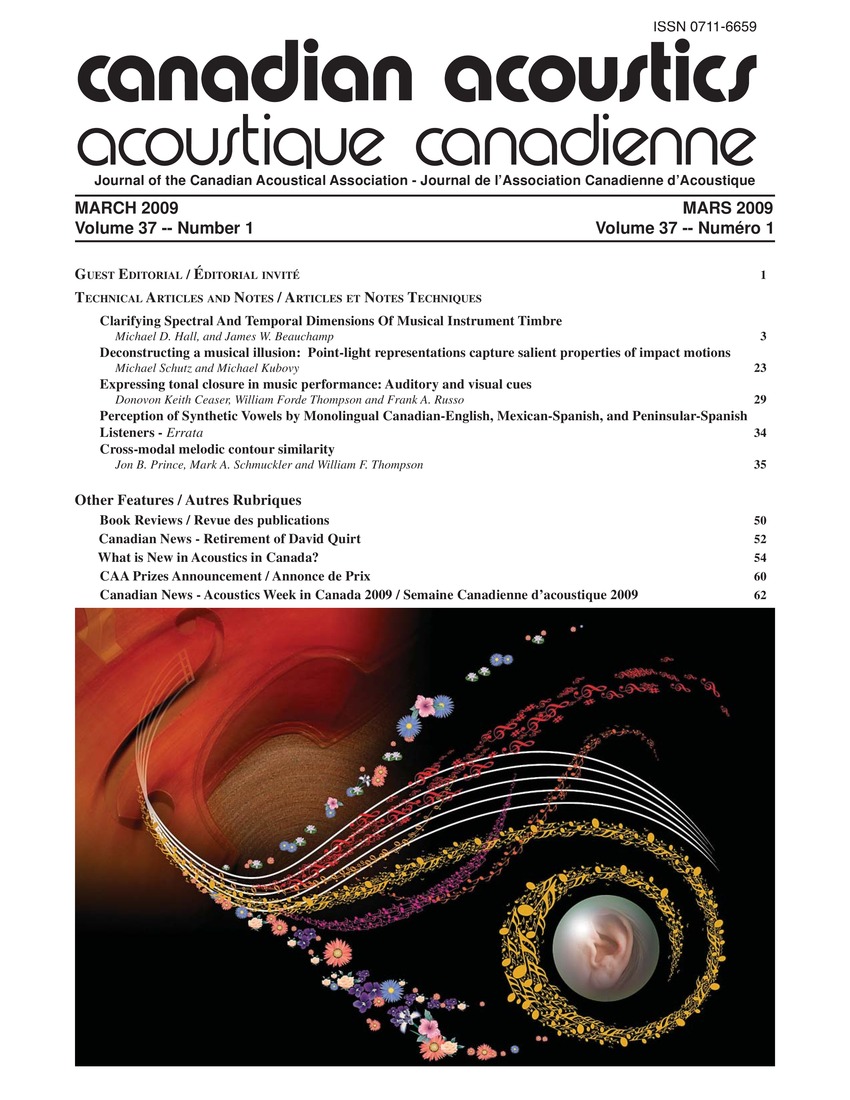Expressing tonal closure in music performance: Auditory and visual cues
Keywords:
Acoustic outputs, Facial expressions, Mean values, Music performance, Visual cuesAbstract
We examined whether musical performers communicate tonal closure through expressive manipulation of facial expressions and non-pitch features of the acoustic output. Two musicians hummed two versions of Silent Night: one ended on die tonic of the scale and exhibited tonal closure; the other ended on the dominant and was therefore tonally unclosed. In Experiment 1, video-only recordings of the hummed sequences were presented to 15 participants, who judged whether the (imagined) melody was closed or unclosed. Accuracy was reliably above chance, indicating that the musicians expressed tonal closure in facial expressions and listeners decoded these cues. Experiment 2 was conducted to determine whether musicians also communicate tonal closure in acoustic attributes other than pitch. All tones in the hummed melodies were pitched-shifted to a constant mean value, but performances still differed in loudness, microtonal pitch variation, timing, and timbre. Participants judged whether audio-only recordings were closed or unclosed. Accuracy was not above chance overall, but was marginally above chance for judgement of one of the two singers. Results suggest that tonal closure can be mapped onto non-pitch aspects of performance expression, but is primarily restricted to the use of facial expressions.Additional Files
Published
How to Cite
Issue
Section
License
Author Licensing Addendum
This Licensing Addendum ("Addendum") is entered into between the undersigned Author(s) and Canadian Acoustics journal published by the Canadian Acoustical Association (hereinafter referred to as the "Publisher"). The Author(s) and the Publisher agree as follows:
-
Retained Rights: The Author(s) retain(s) the following rights:
- The right to reproduce, distribute, and publicly display the Work on the Author's personal website or the website of the Author's institution.
- The right to use the Work in the Author's teaching activities and presentations.
- The right to include the Work in a compilation for the Author's personal use, not for sale.
-
Grant of License: The Author(s) grant(s) to the Publisher a worldwide exclusive license to publish, reproduce, distribute, and display the Work in Canadian Acoustics and any other formats and media deemed appropriate by the Publisher.
-
Attribution: The Publisher agrees to include proper attribution to the Author(s) in all publications and reproductions of the Work.
-
No Conflict: This Addendum is intended to be in harmony with, and not in conflict with, the terms and conditions of the original agreement entered into between the Author(s) and the Publisher.
-
Copyright Clause: Copyright on articles is held by the Author(s). The corresponding Author has the right to grant on behalf of all Authors and does grant on behalf of all Authors, a worldwide exclusive license to the Publisher and its licensees in perpetuity, in all forms, formats, and media (whether known now or created in the future), including but not limited to the rights to publish, reproduce, distribute, display, store, translate, create adaptations, reprints, include within collections, and create summaries, extracts, and/or abstracts of the Contribution.


